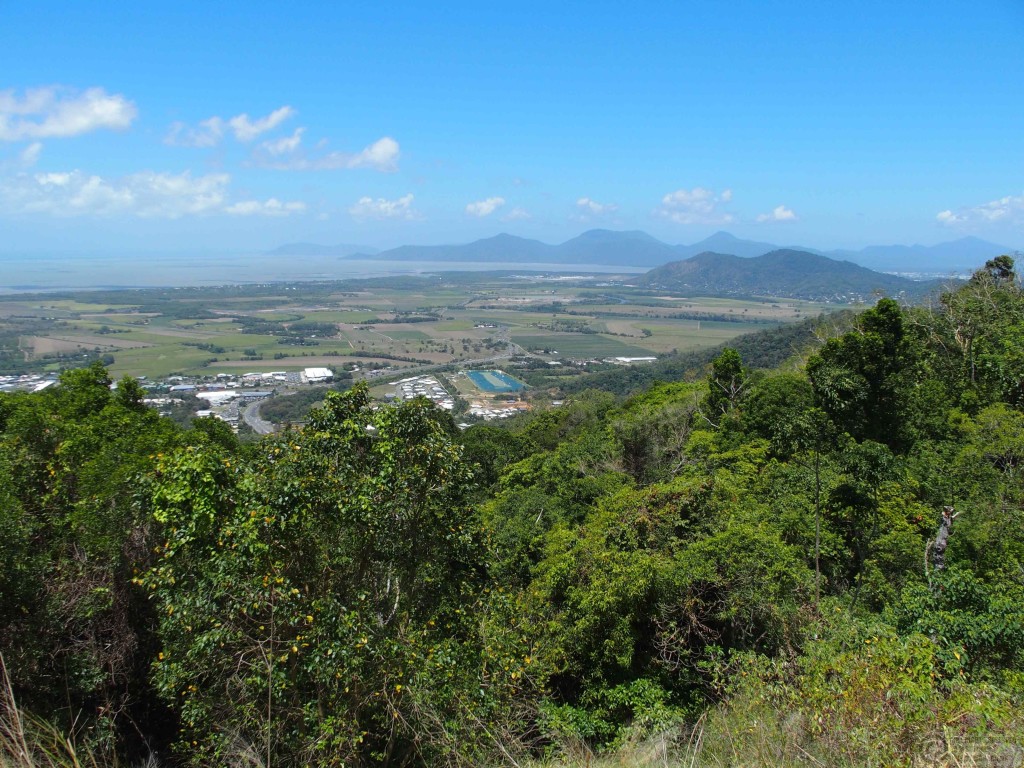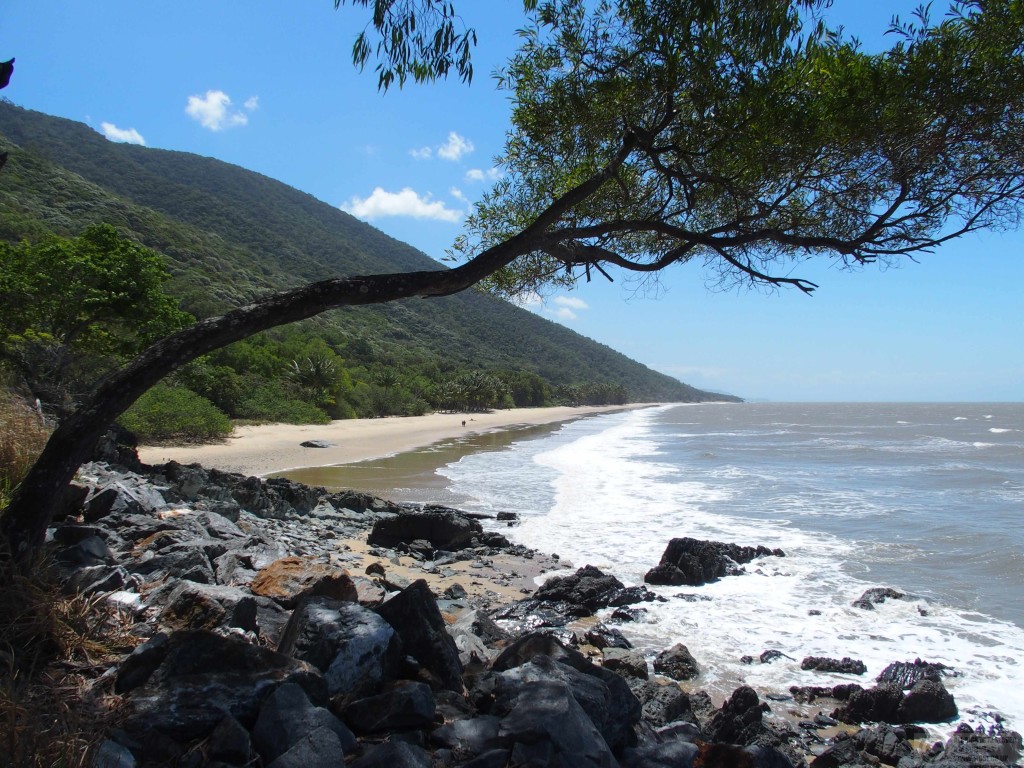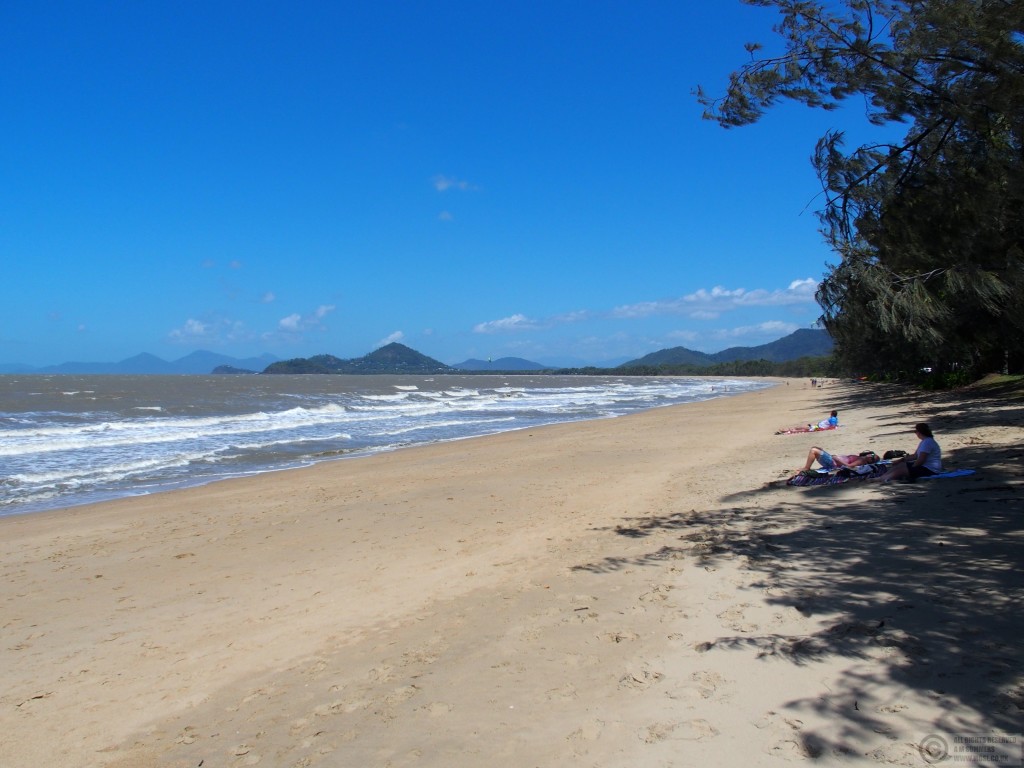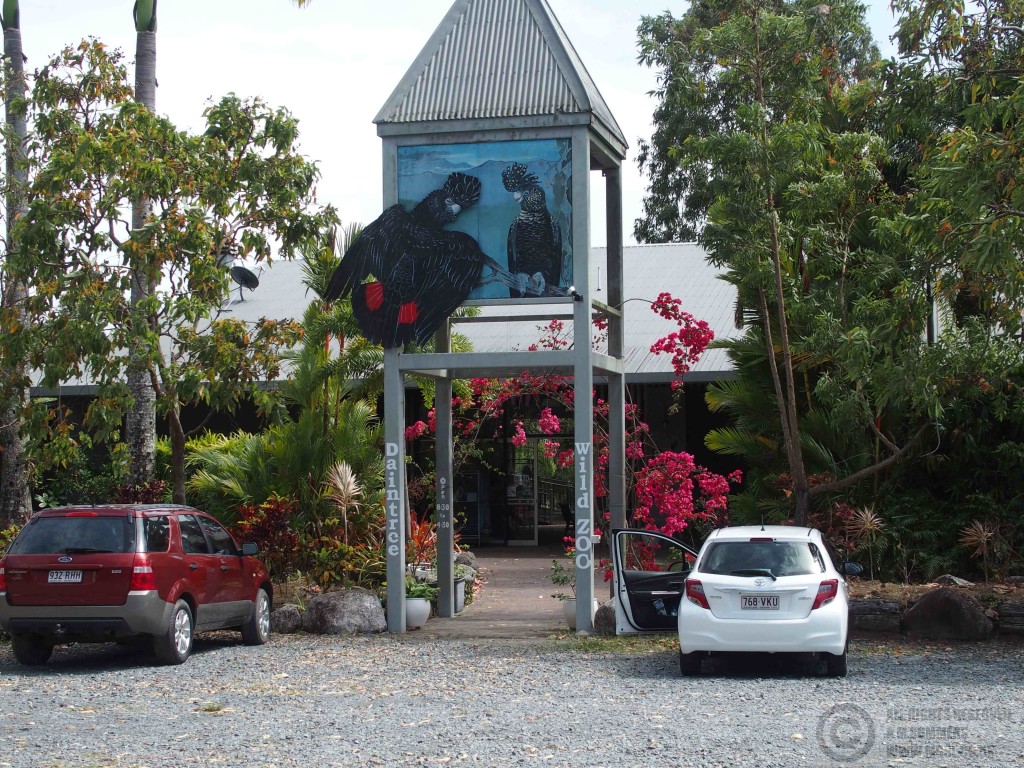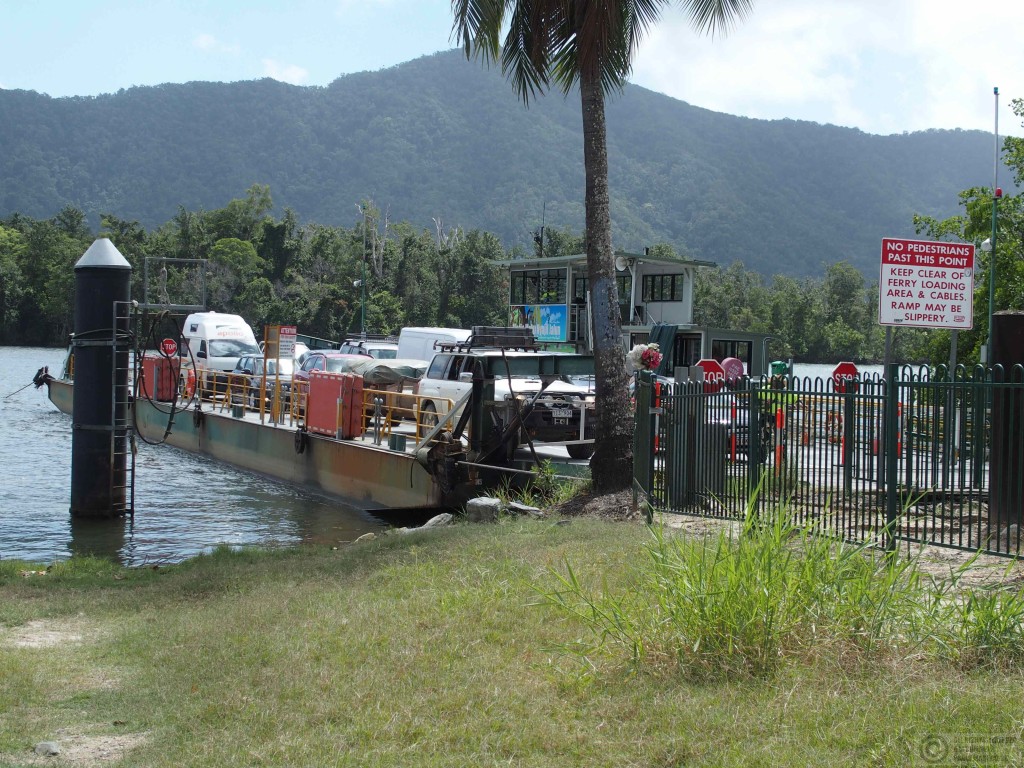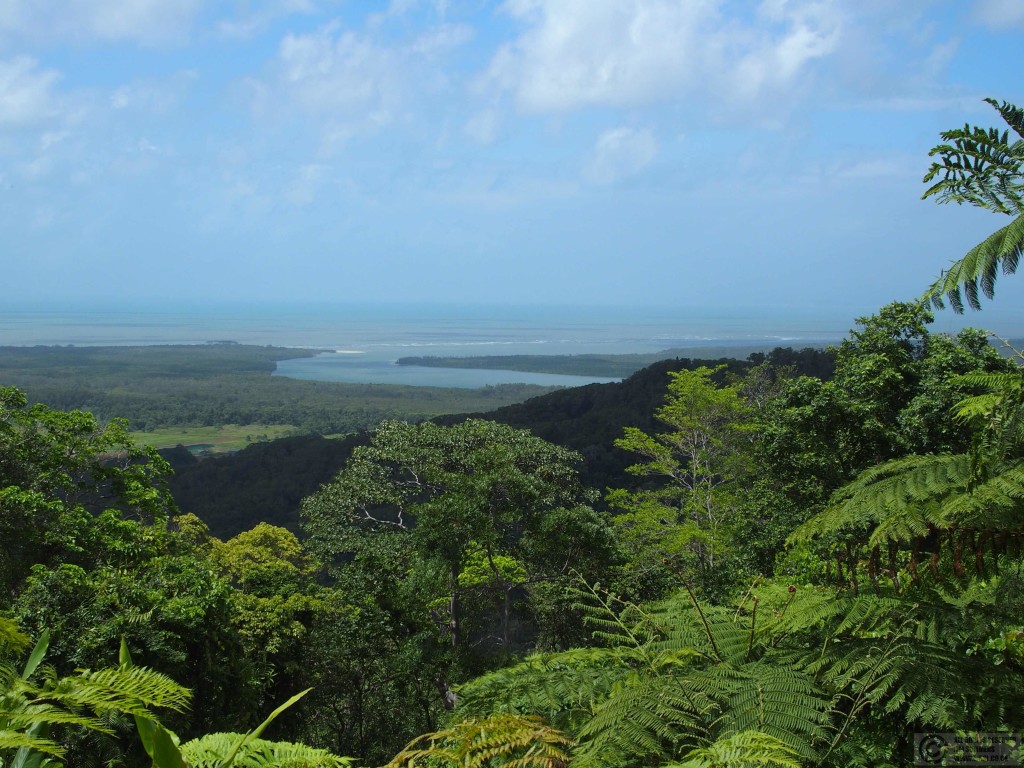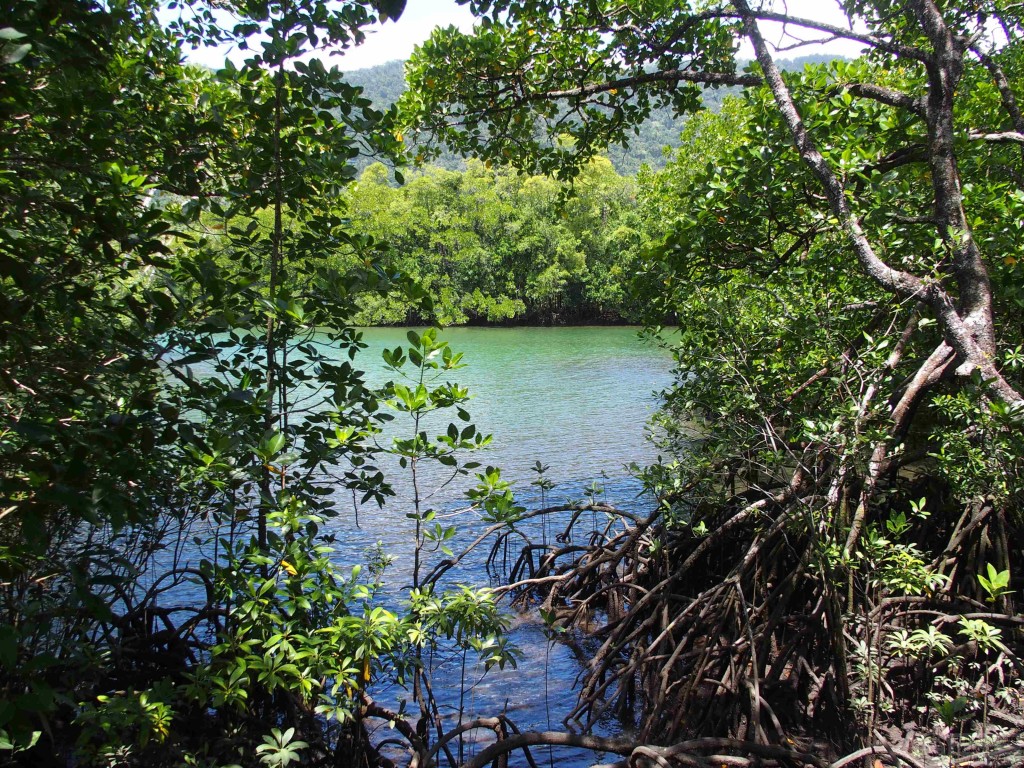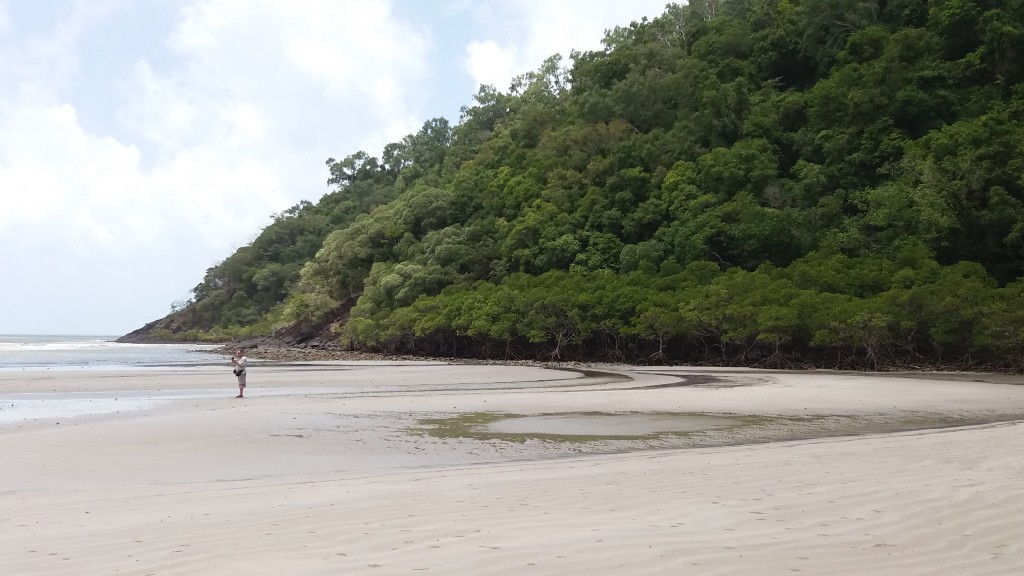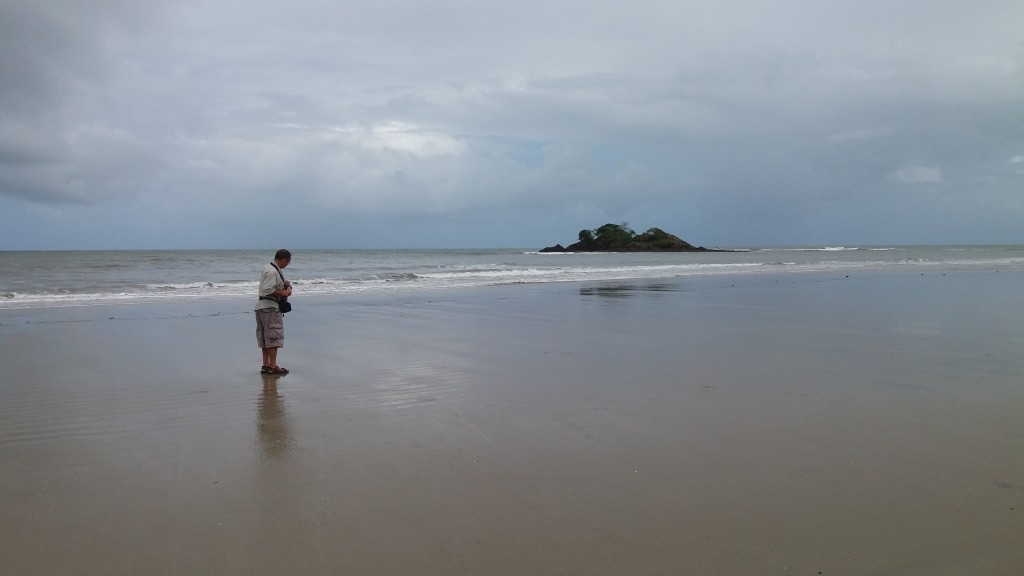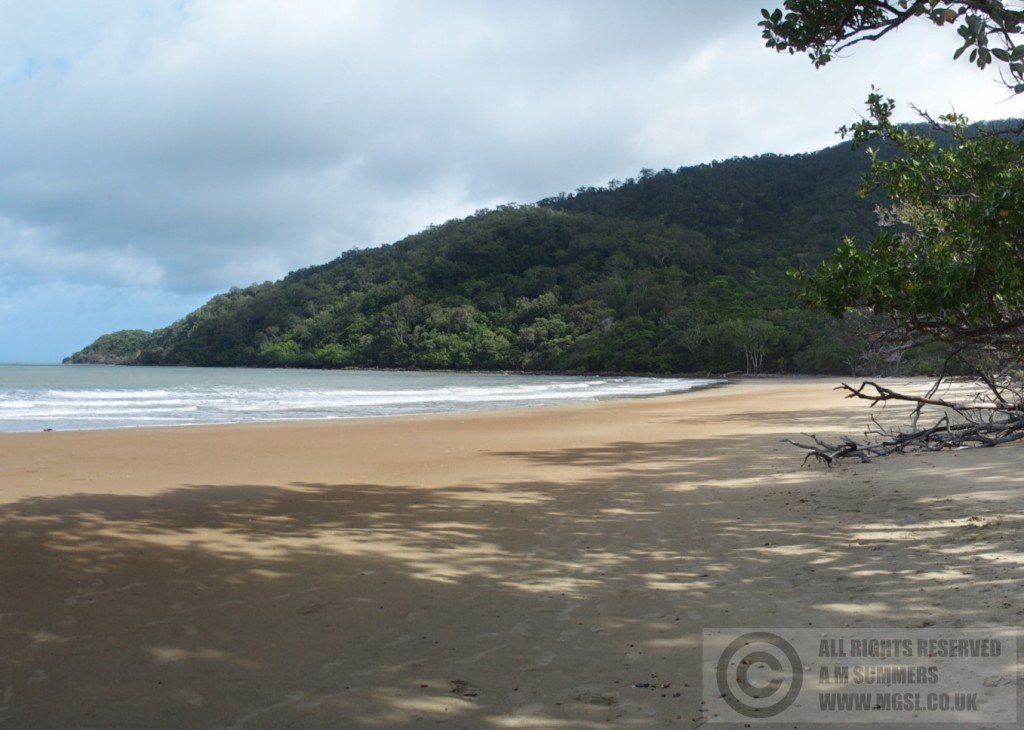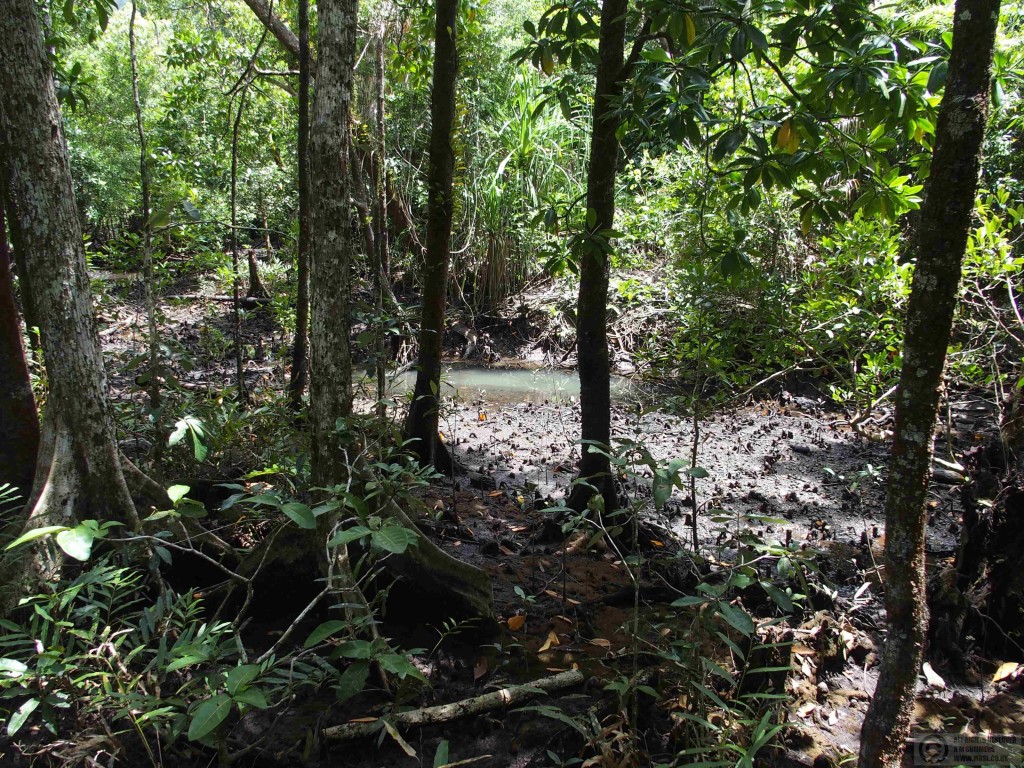We collected yet another Yaris the next morning. There must be reason they are so popular with hire companies: we might buy one when we return to the UK. Our departure was delayed by a long chat with the receptionist at Il Palazzo, an English woman with a 12 year old son. She had considered returning to the UK for his secondary education but when she went for a visit had found it too expensive. While prices in Australia seemed high to us, they are matched by high wages and a tax regime that meant she paid virtually none, with allowances for living in a “remote” area (Cairns city!), her son, and even things like computers bought for his education were tax deductible.
The drive up to Barron Falls was steep and winding, and it was noticeably cooler up there. At this time of year only a little water tumbles down the rock face, but the view was spectacular. Back down on the Captain Cook Highway we headed north, stopping to gawp at stunning coastal scenes.
Palm Cove is one of a string of beach resorts north of Cairns – it seemed pleasantly low key, with all the development restricted to the landward side of the promenade, and a belt of trees behind the sand. There were no sunbeds or deckchairs for hire – it seems that Australians like their beaches as nature intended, except for stinger nets.
We made the short detour into Port Douglas – its centre was mainly given over to restaurants and shops selling colourful, holiday-type clothes, but it had the bank that we needed. Turning inland, fields of vivid green sugar cane dominated the scene, with railway tracks for little trains to transport it to Mossman for processing. Mossman was a surprisingly busy little town with a large Woolworths, a sugar works chimney belching a cloud of white steam, and crowds of homeward-bound schoolchildren.
Beyond Mossman the coastal road goes only to Daintree village and Cape Tribulation before turning into the 4WD-only Bloomfield Track. The only place of any size north of Mossman is Cooktown, 250 km away by an inland route on the other side of the coastal range. Mossman is where everyone in the Daintree must go for banks, shopping, education and medical services.
We knew our guesthouse was in a zoo. Well, not exactly in it, but above the reception building, so our room looked out over enclosures which were home to wallabies, black swans, and a noisy emu. The owner was keen to stress the zoo entry discount that we would get as guests, but it was still $12.50 each and zoos aren’t really our thing. We had only ended up there because of having to change our plans at such a late stage. As it was a Thursday the restaurant was closed (on the owners’ evening off a yoga class was held there instead) so it was lucky that our budgetary concerns had prompted us to bring the cold salmon and salads with us, or we’d have had a long drive to find dinner.
After an excellent serve-yourself breakfast of fruit, cereal and assorted toastables that included fruit loaf and crumpets, we set of for the Daintree. There was no entry fee to the national park, but the only paved road in involves a $25 (return) ferry across the Daintree River. The Daintree River has been the venue for several fatal crocodile attacks, so we made sure to stay at least 5m from the water’s edge while waiting to cross – but saw none on the way over.
The Alexandra Lookout marks the pass over the first ridge north of the river, and afforded a great view down over the mangrove swamps of the estuary. Although one member of the busload of young backpackers seemed far more interested in the view of the shorts-clad rear of one of his fellow passengers as she leaned over the rail.
The Mardja Walk led through a swathe of rainforest and mangroves to a viewing platform by a creek. Australia does these walks so well – the path is well maintained, sometimes a raised wooden walkway, with information about the flora and fauna en route. There was always somewhere to park, and often toilets (even if they were the non-flushing “long drop” type – which, surprisingly, didn’t smell at all).
After Mardja we head straight for Cape Tribulation, a headland and small assemblage of accommodation, eating places and little supermarket that marked the end of the paved road. The beach to the north of the headland was beautiful – a crescent of pristine white sand backed by deep green forest. A few visitors like us strolled around, but nobody was swimming: it wasn’t really stinger season yet, but the saltwater crocodiles have no off season.
The guesthouse dinner that night was to be a barbecue. Basically, the owners had friends staying so would just have sold us some of whatever meat they were cooking for their own dinner, at a time to suit them. There was an expression of slight panic when Mr V said he didn’t eat meat, and although fish was hastily offered (at a higher price) we’d decided to have lunch out and make sandwiches in the evening.
Mason’s Cafe was a simple burger/fish/steak and chips joint, but it was busy. Even with patrons collecting their orders from the kitchen in response to their hollered name, the one staff member struggled to keep up with the order taking, cooking and table clearing until the guy from the adjacent shop popped round to help out between customers. Mr V opted for fish and chips, virtually the only non-meat item on the menu apart from some tofu fritters, while I discarded the options of beef, crocodile, camel and emu for my burger in favour of kangaroo. It was good, but if I hadn’t known different I would have assumed it was beef.
Thorntons Beach was even more deserted than Cape Tribulation – the squally showers and grey clouds had seen to that, but we managed to dodge the rain long enough for a decent walk along the sand. Cow Bay beach was a longer detour from the main road, but was worth the journey. The road led past fields where the eponymous cows grazed – at a quick glance, I could have been in England. But we only had a short time on the beach before the rain caught up with us.
The queue for the return ferry was long, but we just made it onto the first boat – the car behind us had to wait. I was really glad we’d changed our plans to spend 2 nights in the area as it would have been a real rush to have driven from Cairns and explored the Daintree all in one day – it’s a beautiful place that deserves time.


